Building a Lens Family for your new Leica Rangefinder
By Ashwin Rao
Hi all, with the arrival of the Leica M10, I figured that it was time to share some information regarding building a “lens family” for your newly minted camera. Many of you new M10 users are familiar with rangefinders and RF lens, but others of you may have decided to join the fray of Leica M, having had positive experiences with the lovely Leica Q. Some of you may simply be tired of the automation offered by today’s SLR’s and high-end mirrorless cameras, craving a more simplistic and elemental form of photography. Others of you may be intrigued by the compact build, high quality of construction, and timeless approach that Leica takes to building cameras that have more-or-less looked the same since the 1950’s. There’s certain romanticism to shooting with Leica cameras. Some see a “Leica glow” in images taken by the camera. Some may feel an acute pride of ownership that easily sways the vulnerable and contributes to much future gear-acquisition. With that in mind, let’s get into talking about how to build a rangefinder lens setup that suits your needs and budget.
Ashwin Rao, one of this websites resident Leica enthusiasts. Ashwin has written so many great Leica articles for me over the years. See some of them HERE. He is a great shooter, knows his Leica gear and an awesome friend as well!
What makes for a great kit?
Great question. If you ask twenty rangefinder shooters this question, you are likely to get twenty different answers. The problem lies in the challenge of the rangefinder. Leica inspires 2 general types of buyers: 1) those who enjoy shooting in an elemental, stripped down, controlled manner, and 2) those who enjoy the build quality and craftsmanship of a camera that’s built like a fine timepiece. Depending on the type of person you are (and maybe you are both), you may be drawn to either simplicity or collectability. You may find yourself falling in love with the image quality offered by such lovely and small lenses. Whatever the case, you have so many opportunities to own any number, set, or style of lenses to suit your desires. As you see, Leica offers options, quality, history, and opportunity.
One Lens to Rule the All!
Okay, you are a pure shooter and you want to keep it simple. You wan to keep it to one lens for your one Leica body. Maybe you came from a Leica Q and it’s incredible 28 mm lens and see the value of such a compact kit. OR maybe your wallet is dry from buying a new Leica rangefinder (yup, Leica has a way of doing that to many of us). SO to avoid any further buyer’s remorse, let’s just stick with 1 lens….
So which lens? It’s quite simple. 35 mm of 50 mm are the discerning RF shooter’s two options. You may say, “Wait, that Leica Q that I have loved has a fixed 28 mm lens. Why not a 28?” Well, I will just say that 28 mm lenses are great when one desires reportage style photography, but if you wish to cover more ground, both 35 mm and 50 mm lenses offer the greatest range.
35 mm lenses offer a wide (but not too wide) perspective on the world. You can shoot environmental portraits, landscapes, and street photography with a 35 mm lens, and it’s the reason why camera companies such as Sony often release a 35 mm lens with their cameras at launch. This is also a great focal length to consider if you think you may eventually buy a second lens (such as a 75 mm or 90 mm lens) that covers more reach. It’s a nice starting point for many people who are new to serious photography in general, as most cell phones offer a 28-35 mm effective focal length.
So if not 35, then why 50? I will say right off the bat that I am a 50 mm guy. I find that the 50 mm lens can offer the reach that I desire to do both street photography and portraiture comfortably, and many others would agree. There’s a reason that 50 mm lenses have often served as “kit” lenses for so many cameras. They do many things well. The criticism is that 50 mm lenses can seem like a compromise in every direction: not wide enough or long enough. But consider: Many of the world’s most famous photographs were taken with a simple 50. It’s familiar as a focal length. 50 mm lenses are easy to design and there are numerous options to chose from at every considered price point.
Finally, there’s 28. Having been a proud ower of the Leica Q, I have discovered that 28 mm lenses offer a dynamic perspective that’s nearly perfect for street and documentary work, capturing people together, and seeing one’s surroundings. Most who start with a 28 mm lens will add a 50 mm lens for substantially more reach down the road. It’s almost inevitable.
Two’s company….
Okay, the wallet is a bit more open, the budget a bit more flexible, or you already own one lens and desire a second. There are many families to start building.
35/50 is a really valuable kit for many who desire the qualities stated above. Why not have both for a change of perspective, yet accomplishing the same general objective. Many famous photographers, particularly those who developed to concept of documentary or street photography, used only these 2 focal lengths and never moved to others.
28/50. Another great combo that adds a wider perspective, introducing the 28 mm lens along with a 50 mm “all arounder”. 28 mm lens offer an added benefit in being compact (for the most part, save the 28 mm f/1.4 Summilux), and don’t get in the way much unless need. If you have a 50 mm lens, I would personally add a 28 mm for the most noticeable step off, compared to 35 mm
35/75. Another classic combo. Adding a 75 mm lens such as a Leica Summarit, Summicron, or (gasp, the amazing 75 Summilux) provides a lovely lens with more reach, nearly perfect for head/shoulder portraits, and complements a 35 mm lens so well. The primary negative of using a 75 mm lens on current rangefinder bodies involves the horrid frame lines. Attaching a 75 mm lens brings up the 50/75 frame lines, where 75 mm-dashed lines seem almost an afterthought. That being said, if you are able to adjust, the 75 mm Leica lens family (and let’s not ignore Voigtlander) offer some of the finest optics available on the planet. The 75 mm f/2 Summicron and Mandler’s favorite 75 mm f/1.4 Summilux each offer their own magical rendering.
Okay, 3 lenses…let’s build a complete kit!
35/50/90 is a classic 3 lens kit that covers 95% of everything a photographer will ever dare shoot, and further a comfortable range that makes photography easy. The kit only is really limited in the RF world in gathering a wider perspective, and thus, one may wish to choose:
28/50/90. For most photographers who prefer 50 mm as their primary lens, complementing that lens with a 28 mm for a wide perspective and 90 mm lens for telephoto and portrait work is nearly perfect. This would be my choice for a 3 lens kit. (Mine to, and is – Steve)
35/75/135. If you have started by building a 35/75 mm lens set, you can always go super long and into 135 mm. I will say that the small focus patch and frame lines of the 135 mm lens makes focusing these lenses accurately on a rangefinder challenging. That being said, 135 mm lenses are often critically sharp and can be had for a song (for example, the 135 mm Tele-Elmar performs very well and is one of my most discussed reviews).
Special lenses….
As many of you know, and some of you will discover, there are a few lenses that deserve mention as special lenses that defy the lens set ups discussed above. For those of you with deeper pockets, adding a special lens to your current kit may add artistic flare or purpose to your kit.
The most special of the “special” lenses is the 50 mm Noctilux family. This lens has magical properties, according to many of its owners, and while one pays the price (literally) in volume and cost, the reward is one of the most unique ways of seeing in current photography. There are not many lenses in production that are more sensitive to light or offer narrower depth of field than the 50 mm Noctilux. Go do an image search, and you may be convinced.
Beyond the Noctilux, there are a few specialty lenses that could be discussed, but I will try to keep this simple. The only other that I feel is currently in production and truly unique is Leica’s 21 mm f/1.4 mm asph lens. It on3 or the only 21 mm ultrafast prime of its aperture available for 35 mm cameras, with its competitors being huge or poorly rendering ( a much cheaper Rokinon for SLR’s is your only other option at this speed). The 21 mm Summilux is truly a unique piece of glass that must be tamed. It’s not often that a photographer would need something so wide and so fast for their work, but for those of you who are willing to pay the price (say, maybe you are a well paid concert or wedding photog), your return in imaging will be magical.
Specific lenses for specific focal lengths
Okay, having gotten all of that out of the way, here are a few recommendations when seeking out lenses to buy to fill your family 28 mm lenses
28MM
• Leica 28 mm f/2.8 Elmarit Asph. Prior versions of this lens are solid performers as well.
• Leica 28 mm f/2 Summicron Asph. A great standard wide lens with legendary rendering recently reformulated by Leica to play well on mirrorless bodies.
• Voigtlander 28 mm f/3.5 Color Skopar. Tiny but mighty, and unfortunately, out of production. This was one of Voigtlander’s only brass-bodied lenses, and it’s heavy and incredibly well built for its diminutive size. I feel fortunate to own one and pair it with my 50 mm lenses often.
35 mm lenses
• The Leica 35 mm f/2 Summicron family is legendary. From the first version of this lens to the current aspherical design, you simply can’t go wrong with this family of lenses, and if you are starting in the rangefinder world, you would be hard pressed to go in a different direction. The older 35 mm Summicrons, particularly the 2nd and 3rd versions of the lens, are affordable and perform admirably on digital bodies.
• The Leica 35 mm f/1.4 Summilux Asph family is also legendary. You gain a bit of size and weight, as well as a lighter pocket book, but the 35 Summilux lenses offer some impressive rendering that some consider to be magical. I have owned a 35 mm Asph Pre-FLE or FLE lens for nearly a decade. I find that the Summilux designs at this focal length have a bit of pizzazz, that legendary Leica glow. Well worth the investment.
• Voigtlander 35 mm f/1.7 Ultron or 1.2 Nokton lenses. Cosina Voigtlander is often poo-pooed as Leica’s ugly stepsibling, but in truth, make incredible designs at a far more affordable price point than offered by Leica. Both of these lenses are legendary performers well regarded by many rangefinder enthusiasts, and in fact, Leica does not offer a fast competitor to the Nokton. SO take that Leica.
• Let’s not sleep on the Leica 35 mm Summarit lenses. Designed as a cost-friendly alterative to the Summicron and Summilux families, the Summarit lenses (35/50/75/90) are all incredible performers that are only “hampered” by a maximum aperture of 2.4. If you are on a budget, yet value the Leica name, the Summarits are the way to go, and oftentimes, an entire set can be had for the price of 1-2 Summicrons.
50 mm lenses (so many options. Here are but a few)
• Leica’s 50 mm f/2 Summicron family is very difficult to argue with. Leica’s Summicron lens offer a tame, calm, perfected way of seeing the world at f/2 or stopped down. The 50 ‘cron has a venerable history dating to luminaries such as Henri Cartier-Bresson, who’s preferred lens was a collapsible (1st version) Summicron. Summicron lenses tend to render a bit more clinically, particularly the modern versions, but that’s really in the eye of the beholder. The current standard bearer as “Best 50 mm ever built” is the 50 mm f/2 APO Summicron Asph. Compact, sharp wide open and at every aperture, and capable of out-resolving every sensor currently on the market, yet with a gentle out-of-focus rendering. Magical.
• Leica’s 50 mm f/1.4 Summilux family is the faster sibling of the Summicron family, and again, often adds a bit more speed and pizzazz, partly by nature of aberrations necessary to develop a fast and compact design. That being said, many Leica photographers consider the Leica 50 mm f/1.4 Asph lens to be the perfect lens for size and performance, and it’d be hard to argue with that.
• Voigtlander offers several 50 mm f/lenses, including the outstanding 50 mm f/1.5 Nokton lens, which would be my choice were I budget constrained. This lens really is beautifully constructed and produces a sharp, rich, slightly vintage image that is appealing to the eyes of many.
75 mm lenses
• Leica’s 2 legends are the 75 mm f/2 Summicron and the 75 mm f/1.4 Summilux, the latter which was reported to be Walter Mandler’s favorite lens design.
• Don’t sleep on the newer Leica 75 mm f/2.4 Summarit, with it’s slower aperture and slightly more distant minimal focus distance, both which are major drawbacks for portraiture, but yet the Summarit costs a third or less than either of its older siblings.
• I have heard great things about both of Voigtlander’s 75 mm lenses (the f/1.8 and 2.5 mm Heliar lenses). They don’t offer the same magic for portraits as Leica’s options, but they offer a great price and sharpness, if you are pinched to buy a cost-effective alternative.
90 mm lenses
• The 90 mm f/2 APO Summicron Asph is one of the finest 90 mm lenses ever made. It’s sharp, and some consider it to be too sharp for portraiture, particularly for those of us who have skin blemishes. That being said, it’s a lens that can be tamed and turned into a wonderful portrait lens with lovely bokeh, perfect color reproduction and a bit more reach!
• The 90 mm f/2.4 Summarit is Leica’s current in-production option that performs plenty well for a 90 and may be a better option for its more gentle handling of skin for those who shoot portraits regularly
• If you desire the ultimate compact 90 mm lens that can do Macro to boot, you may wish to entertain Leica’s 90 mm f/4 Macro Elmar. Sure, you lose some aperture, but you gain tiny size and macro capabilities on the M system. Maybe not a bad trade off?!? It’s costly but powerful….like Leica!
So there you have it…a lot to digest, and there’s much more to consider once you get into it. This article should get you on track to building a great kit for your new Leica. These are exciting times for photographers, who are granted so many options and ways of seeing.
All the best to you, and I hope you enjoy the opportunities that rangefinder cameras allow you to possess!
Best,
Ashwin

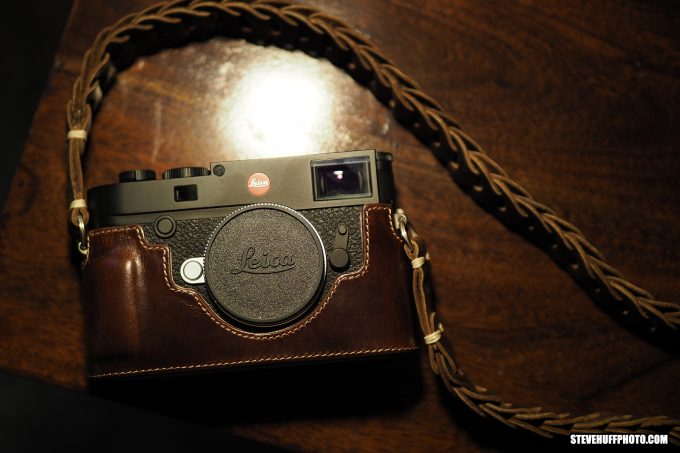
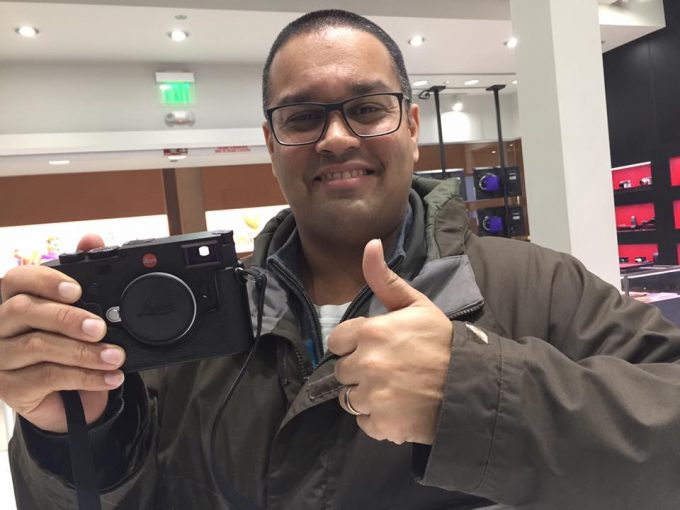
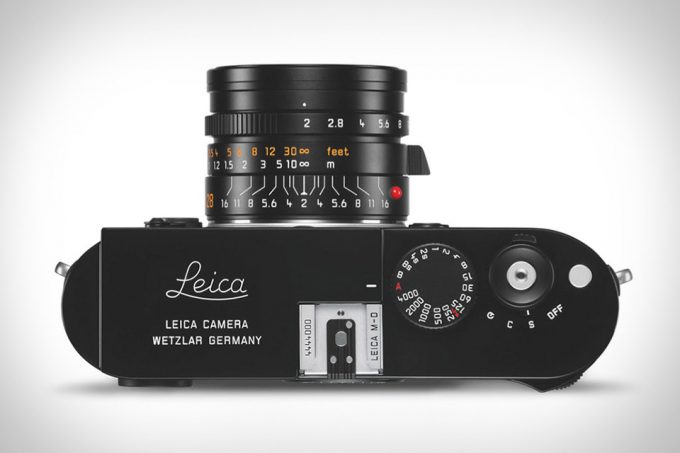
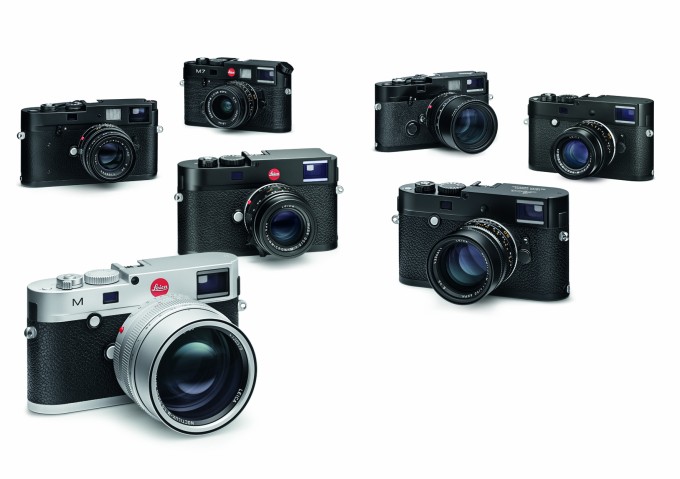
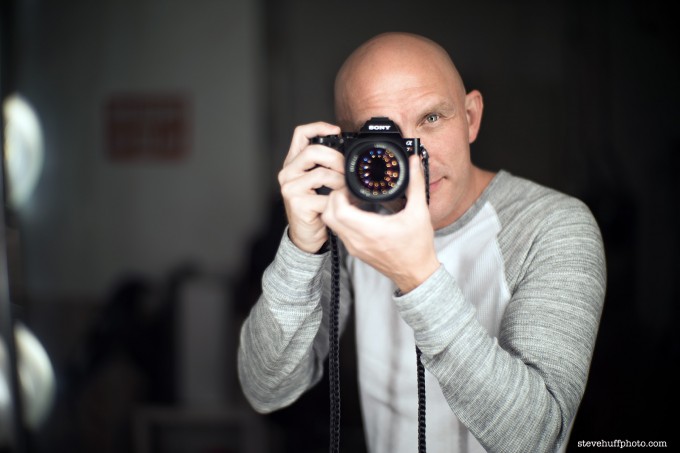
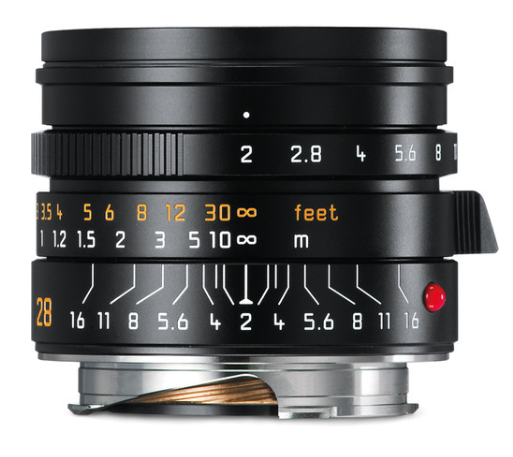
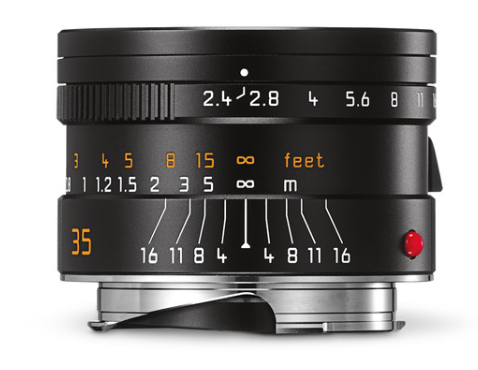
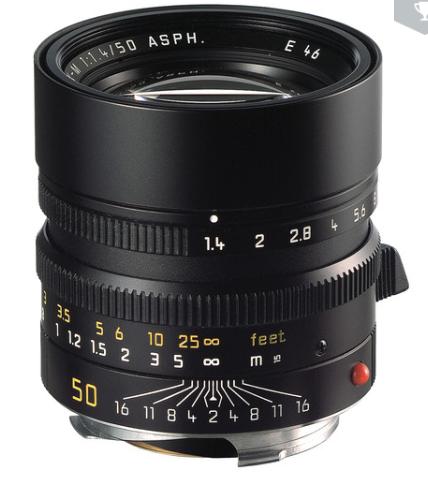
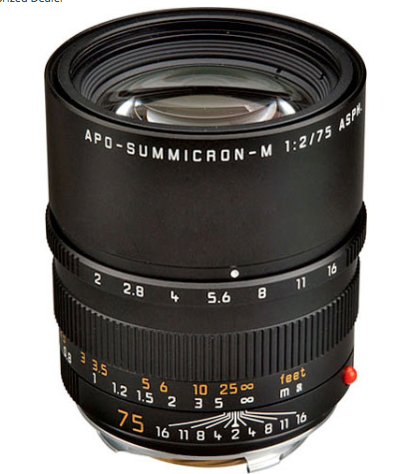
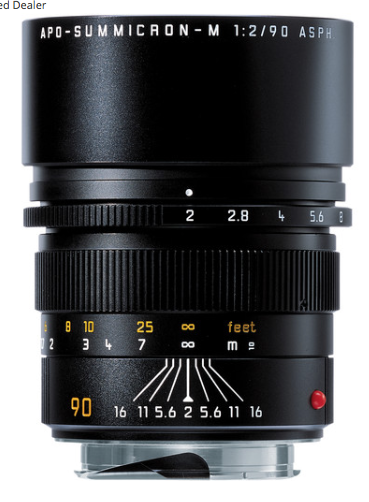
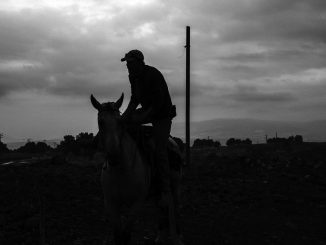

I don’t own an M10 (I shoot an M Monochrom CCD, the screenless M-D 262 and for film an M5), and currently own 35, 50 (three of them) and 90mm lenses.
Most of the time I leave the house with one body and one lens, choosing between color and black and white, and then 35mm or 50mm, depending on where I am going and what I want to do there. I only bring the 90mm for family trips where I plan to portraits, and even then the 90mm often stays in the bag.
I own two 35mm lenses, but only use one of them, the 35 FLE, which is a marvelous thing that is absolutely perfect in ever way that a 35mm lens can be. Sharp without being clinical and just gorgeous in the way it draws light on a sensor or film.
50mm is my favorite focal length, and last weekend at a workshop with a borrowed lens, I finally found what I think is the look I like most at that focal length. As a result, I’ve ordered a 50mm f/1 Noctilux, which wide-open renders a scene exactly the way I want it to look. I also have the non-APO 50mm Summicron which is a wonderful lens that never lets me down, and an ancient Carl Zeiss Jena 5cm f/1.5 Sonnar adapted to Leica by Sonnar-master Brian Sweeney. Finally I’ve got a mid 1960s 90mm f/2.8 Elmarit that is far better than it should be, but which I still don’t use nearly enough.
I could live happily ever after with just a 35mm or 50mm lens and not miss much, but really like having both. Generally its 35mm for travel, 50mm for street and portraiture, and both for events, with the 50mm usually on the Monochrom.
Hi Ashwin,
A very nice collection of ideas and use cases. I very much appreciate the effort to review all these situations.
I used a M3/M6 for decades, first with only a 50 Summilux. That was during my family growing years and it seemed a perfect choice. Later business travel began to pick up and my interests switched to a 35mm Cron. When restrictions are in place, I look back with no regrets on how I bent my photography to fit those lenses.
Those two are still my preference, even though they are closely spaced. Each has a role. As I became experienced, that Summilux was used mainly only at full aperture. It was pre-Asph and with a beautiful rendering. I can’t think of my personal kit without one.
I’ve used a 28mm for much of my street photography on another camera. I wear glasses and have a larger than average eye relief so the 28mm bright frame has also been a problem for me with a M camera. In recent travels and some street situations, I’m finding a 21mm much more useful. Since it is also beyond frame lines, I think my third lens will the the 21mm with the “visoflex” finder.
So another use case 21/35/50. To many a strange spacing, but in a role-defined usage, it makes sense for at least one :-). In my case it will be the 21mm f/3.5. That makes a pretty compact travel kit. Thanks for your time……
Best Regards,
Roger
Just curious..
How MATE 28/35/50 will perform with this new sensor?
Hi Ashwin, thank you for your detailed article. Just one question: how about the 24-50-90 version instead of 28-50-90? You did not mention the 24mm f/1,4 lens at all. If you use your kit for travel photography, don’t you think that a 24mm will do? Or, you do not prefer 24mm lenses?
Many thanks for your reply in advance. With best regards from Hungary,
Thomas K.
All the system I have which is quite a lot have 28-50 and before an 85,90 or 135 (but dont use thrm so I stopped). Got latest is the 35f1:4 voight which is cool because it is compact and has a 1.4 even if the bokeh becomes busy.
The planar zeiss 50 Is pretty nice but wanting a 50 summilux. I have a summarit 50 and a konica hexar 50f2.
This just doesnt stop. Im also crazy about the 28 lux. Always in my mind.
Ash help me will it be a noct or a lux for the 50mm?ü Is it really legendary?
Love hating you guys.
What a thorough & helpful guide to lens options for the Leica M10 (or earlier M’s as well). I now shoot with the Leica Q but when I had my M240, my two most favorite lenses were the Zeiss Planar 50 f/2 & an older Leica Tele-Elmarit 90 f/2.8. The sharpness & color production of this Zeiss was amazing & the Leica 90 rendered beautiful images, with the added benefit that you could drop it in your coat pocket it was so small. But thanks again for putting all of this together – really well done. Cheers,
Jed
A disservice not to include the ZMs and classic ZMs. We all have our favorites but this post is trying to be educational and informational.
I love 35/75 or 50/90
I now have 135mm and start learning to combine with another lens.
Thank you Ashwin for your comprehensive recommendation for building Leica Lens providing combination of these lenses. Truly educational and helpful for amateur photographers.
Ashwin is the man when it comes to M glass. He has used almost all of it and knows what he speaks of.
Thanks, Steve, and thanks, Benedictus!
Another thing to keep in mind is filter size… i prefer smaller lenses, so i go all 39mm. Voightlander 21mm F4 color Skopar, Leica 35mm Summicron v1 ( the one with googles), Leica 50mm Summicron (I have two, rigid and current), Leica 135mm Tele-Elmar f4. You only need one set of filters and none of these lenses are super expensive, plus they are relatively small.
Normally i’ll either bring just the 35mm or the 21/50 combination to keep things simple.
Completely agreed. It’s nice to keep filters uniform, and for the “most” part, summicron and summarit families share the same filter thread, though there’s more variance among summilux lenses.
Great article, can’t wait for my M10! 😀 What about some of the older lenses, such as Summaron 35mm f3.5 or 2.8? Or event L-mount lenses like the summaron 28mm, elmar 35mm, 50m, etc? Do you have any recommendations if someone is looking for a more classic rendering?
I’m curious as well. My 35mm Summicron V1 is my favorite lens on the Monochrome by far, but the MM seems to do better with less contrasty glass.
I like my 35 and 50 Summicron but as I have mentioned before on previous posts- all the people I know who shoot Leica M do not do reportage. They all have 35 90 or 50 75 or similar set ups.
Thanks for outlining the choices.
My advise is get a prime and shoot shoot shoot and see where your interests lie.
Ashwin
Which 28mm and 50mm are you using?
CV 28 mm f/3.5 Color Skopar and 50 APO ‘cron are my choices
I have serious issues to get the 28 3.5 work on a M240. The left and right border has an horrible redish colorshift. Did you every find something similar with your lens or is the problem something else (adapter for the screw to m mount comes to my mind)? Would really help me out!
90mm Elmarit is good option around $1K now days.
Maybe I can add that Zeiss is also producing a full set of great M-mount lenses.
My favorite is the C-Sonnar 50/1.5…
The 50/2 Planar is more probably going to be useful for everyday shooting unless you mostly do portraiture – the 50/1.5 is an odd design that’s a bit soft at wider apertures, which is good for portraiture and not much else.
Echo that
I am so sorry to have forgotten to list Zeiss lenses, as they are a great line of lenses. The C-Sonnar 50 is one of my personal favorites. IT has a unique optical signature that is different than any other modern lens and would be a great 1 lens solution as long as you are willing to accept the slightly longer minimum focus distance.
Good overview for those who are starting with photography. But something tells me they won’t be looking into buying a Leica just yet, at least I hope they won’t.
I personally use 35mm lense 80% of the time, 24mm lense 18% of the time and the rest is 90mm. I own Olympus Em1.
For me 28mm is not wide enough if 35mm is too narrow.
Hi Steve! Great article, mouthwatering gear, but…Will your offering take better photos than my 1955 M3 and 35mm first generation Summicron?
Please say no. I have a mortgage to pay! Z
Well, I always so no one really needs a camera upgrade..as in NEEDS. Your M3 is beautiful and can make fantastic shots. But for you the question would be…”do I want to jump to digital”. 😉
Agreed. And you can started with a used M to see if it suits you. I’d recommend the M9 or M8, as entry price is not that steep any more, and IQ is still amazing for those cameras.
Steve, I was on budget when I bought Nokton 50mm/1.5. Is it worth getting the summilux now that I have sold my kidney?
That Nokton 1.5 (latest version) is beautiful. Has a little distortion but the difference between it and the Lux comes down to color (nokton is warmer) and bokeh (different signature) but they are more similar than different!
I think the Nokton is great.
I’m surprised there is no mention of zeiss lenses? 50mm c sonnar is a classic!
With so many out there Ashwin may have missed one or two but yea, the Sonnar is a beauty and classic. I want to see how it does on the M10 myself.
I simply forgot. Yes the C-Sonnar 50 is a classic, and additionally was designed from a long line of Classic Sonar lens designs dating back over 70 years, with modernized coatings. It’s a great option for unqiue, emotional photography.
Thanks, Ashwin. Lens choices are not always easy, even if you’re talking about zooms.
Ideally I think that the Tri-Elmar plus either a 90mm or a 135mm would be great. The challenge is to have as few lenses as possible. Can you cover everything under 135mm with three or fewer lenses? I just did, but I had to bring in the Tri-Elmar to do it!
That two-lens kit would be great if you wanted very high quality travel photos with minimal fuss (imagine the DSLR equivalent – no thanks!). Those lenses with an A7 body would work arguably just as well.
The cool thing about having live view is that you could use one of your existing lenses as a macro, just by adding an M extension tube. Or you could use any SLR lens. The M can be a live view camera, but a live view camera cannot be an M.
There is a little trick that some M users have: they use a 40mm instead of a 50mm. This still brings up the 50mm frame lines. But just in case you need to correct the horizon (which inevitably crops your image) you have that ‘extra’ space. And you can easily crop all your other images in the RAW converter to the 50mm FOV. You lose some pixels, but that’s the price of insurance.
Another thing to do would be to get Leica to modify the frame lines so that they are a little narrower than normal.
Footnote for M8 users: you can use the 135/2.8, as it brings up the 90mm frame lines. The goggles magnify the view to match 135mm, and your crop factor makes it a 175mm equivalent. That’s almost all the telephoto lens that the average photographer could want. Of course, cropping the M240 or the M10 to that FOV will give you slightly more resolution than 10Mpx.
Great comment, and thank you for sharing your thoughts, Karim!
A 21mm is my usual walkabout, it’s great for scenery on an M9. My first Leica prime, I love shooting with it. So much depends on what you like to shoot.
For anyone looking for a 35mm, please don’t overlook the Zeiss 35mm f2 ZM biogon.
To my eyes, I much prefer it to any of the Leica 35’s.
The 3D pop and colors that come from this lens are stunning.
I’m actually kind of surprised it wasn’t mentioned in this article. (Or any Zeiss lenses, for that matter.)
My mistake for failing to mention Zeiss. A great intermediate step between CV and Leica (for the most part). More Pop and color saturation from Zeiss lenses out of the gate. People are now much more familiar with the Zeiss look given the Sony cameras use Zeiss optics.
I have a question about the
Zeiss Biogon C 21/4’5
Voigtlander M 15/4’5 II
with M10 now and Sony A7 RII
GREAT LENSES.
What do you think Steve ?
Someone do use them with Sony A7 RII ?
THANK STEVE FOR ALL YOU WORK AND HELP.
Eric
21 mm f/4.5 is great but does not do well in corners for most digitals. The CV 15 III is best, as the I and II also fail a bit in the corners
Hi nice review, and answer.
By the way, I have heard recently that Biogon C 21 4’5 and voigt 15 Mk I or II, like voigt 21 4’5 will really work better tgan before with some softwares correction in last camera updated for Sony A7 R2, and also digital Leica especially because it was a shame, Leica cannot fix a sensor which does not match some classical lenses which are extremelly compact and respect Oscar philosophy, … SL is far from Oscar, … marketing gear to face Nikon et Canon.
And 21_40_90 ?
I’m a 35-50-90 guy. No mention of Voigtlander 35 f2.5 VM? With this lens, you can literally put your M in your pocket!
THe CV 35 mm is a great lens. Tiny and high performing, slightly inferior to the Summarit 35 in my experience, but smaller.
Hi, great article but I would add the Zeiss zm 35/1.4 and like its rendering better than the Leica 35/1.4 but the Leica is a lot smaller.
Great lens. It’s really a matter of subjectivity between the Leica and Zeiss 35 mm f/1.4’s (well, price too). I prefer the pop of the Leica, but the Zeiss is more clinical and true to the scene
If you like the 35mm as your main focal length, then a 3 lens set of 21/35/50 or 21/35/75 is very versatile. Sometimes 28mm just isn’t wide enough.
The three lens combo I think is more practical (for me) is actually 21/35/75
Great combo. I almost mentioned this, but the article was getting long
Well Ashwin that certainly one comprehensive list of options! Nicely done.
Have fun with that new M and look forward to seeing some results!
Like Steve selling his SL it will be interesting to see just how many Leica shooters follow suit now and go back to pure RF photography and sell their SL.
Thanks, Andy….I sold my SL to get the M10. Tough call, but it gets me back into M photography full time (well, save the Q, which I love)
I can only say a really big thank you for this brilliantly helpful guide through the lens maze. The best and clearest I have ever read.
Terrific post, thanks for the valuable info!
Interesting. Side question: What viewfinder frame lines are in the M10? You mention you like the 135mm focal length… is there a frame line for that, and if so, is it big enough to be usable?
Oddly enough I can’t find that information on Leica’s site. But I’m 100% sure the finder has 135mm frame lines. You would probably need a magnifier to really use it, just as you would with the M240, M9 etc.
Yes, the M10 does have 135mm frame lines. FYI – Leica has the M10 instruction manual for download or their web site (http://us.leica-camera.com/Photography/Leica-M/Leica-M10/Downloads). The frames lines are discussed on page 158 and shown on page 159 (or pages 162 and 163 of the 229 page pdf file). Enjoy!!
M10 has 135 mm framelines….
Hi Ashwin!
Great article…I’m sure it helps all those new joiners of the Leica family.
Besides that…every written word expresses your passion for the M camera.
best regards,
Michael S.
… 10, 12, 15, 21
Don’t forget Voigtlander.
They’re not the poor cousins
He mentions them here 😉 Quite a few lenses..
I forgot Zeiss, but not Voigtlander 🙂